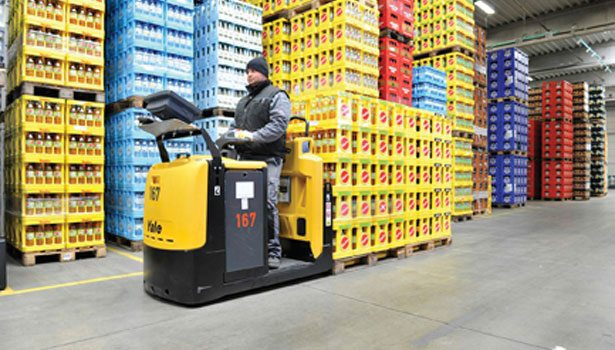Lift Trucks
Making all the right moves
An integral part of the food and beverage industry supply chain, state-of-the-art lift trucks provide efficiency, economy and ergonomics.

Ergonomics enable the operator to be as productive from the beginning to the end of each shift. Source: Yale Distribution.

Jungheinrich electro-pneumatic trucks from Mitsubishi Caterpillar range from 2,000- to 10,000-pound capacities and feature a wider footprint than most, adding stability. Source: Mitsubishi Caterpillar Fork Lift America.

Darigold cut its lift truck maintenance costs in half in less than 60 days by implementing a fleet of Raymond lift trucks and the iTrack system. Darigold’s other locations also have streamlined their tracking capabilities and reduced lift truck leasing costs, all while maintaining uptime. Source: Raymond Corp.



DC to AC
Stability and productivity
Electronic tracking
Good question
Food & Beverage Industry Lift Truck Suppliers
Looking for a reprint of this article?
From high-res PDFs to custom plaques, order your copy today!








